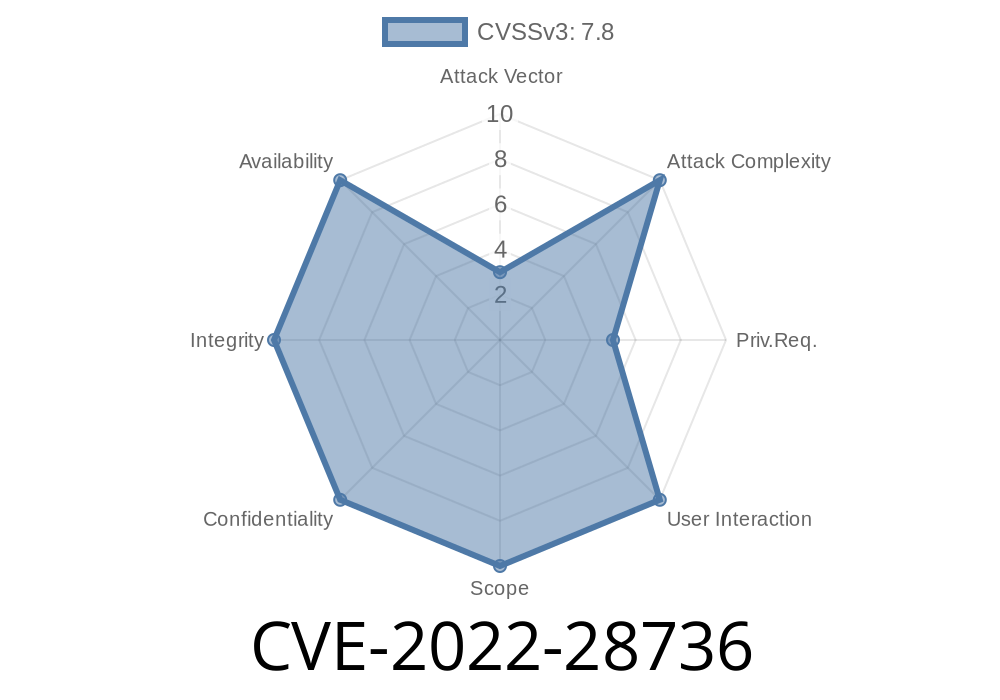CVE-2022-28736 refers to a critical use-after-free vulnerability discovered in the grub_cmd_chainloader() function, commonly used for loading operating systems that don't support multiboot and lack direct GRUB2 support. As a result, sensitive data may be exposed and arbitrary code execution can occur when chainloader is executed more than once. This post will discuss the details of this exploit, including code snippets and references, to better understand the vulnerability and its impact.
The Vulnerability
The grub_cmd_chainloader() function is part of the GNU GRUB bootloader, which is responsible for allowing users to select from multiple operating systems installed on a computer. Specifically, the chainloader command deals with operating systems that do not have multiboot or direct GRUB2 support. When the chainloader command is executed multiple times, a use-after-free vulnerability is triggered, potentially enabling an attacker to manipulate GRUB2's memory allocation patterns and compromise the security of sensitive data and system operations.
Here is a snippet of the vulnerable code in the grub_cmd_chainloader() function
grub_err_t
grub_cmd_chainloader (grub_command_t cmd __attribute__ ((unused)),
int argc, char **args)
{
...
grub_free (dev);
...
}
The grub_free(dev) call is the key part of the vulnerability happening. When called multiple times, the grub_free() function releases the memory that was previously allocated to the dev variable. However, subsequent calls to the function will utilize the same memory space that was released earlier, triggering the use-after-free vulnerability.
To successfully exploit this vulnerability, an attacker would need to overcome a few challenges
1. Control over GRUB2 memory allocation patterns: An attacker would need to manipulate the memory allocation of GRUB2 in a way that allows them access to sensitive data or potentially execute arbitrary code.
2. Triggering the vulnerability: As the issue arises during multiple executions of the chainloader command, an attacker would need a way to execute the command more than once.
3. Gaining arbitrary code execution: The ultimate goal would be to leverage the use-after-free vulnerability to execute arbitrary code with root privileges on the target system.
More information about this vulnerability, CVE-2022-28736, can be found on the following links
1. CVE-2022-28736
2. GNU GRUB
Mitigation
While the use-after-free vulnerability is certainly concerning, protecting your system from this exploit involves:
Regularly update your GRUB bootloader and apply patches as they are released by GNU GRUB developers;
2. Implement and enforce strict access controls to prevent unauthorized users from manipulating the bootloader and executing commands;
3. Employ a monitoring system to alert security teams of any suspicious activity or potential intrusions.
Conclusion
CVE-2022-28736 underscores the importance of staying current on security updates and maintaining proper access control to your systems. By understanding the nature of this vulnerability and what steps can be taken to mitigate its potential impact, we can continue to protect the integrity of our sensitive data and systems while ensuring the secure execution of multiple operating systems.
Timeline
Published on: 07/20/2023 01:15:00 UTC
Last modified on: 08/25/2023 23:15:00 UTC
